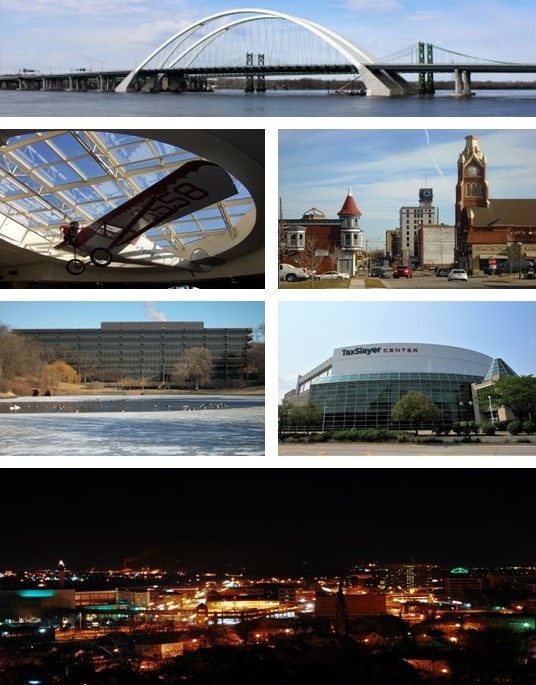
Moving to Moline, Illinois: A Comprehensive Relocation Guide
Considering moving to Moline, Illinois? This historic Quad Cities anchor offers riverfront beauty, affordable living, and Deere & Company presence. With approximately 42,000 residents in 2025 (Quad Cities metro 382,000+), Moline combines Mississippi River location with manufacturing heritage and Western Illinois’ economic hub.
Demographic Profile to Consider If Moving to Moline:
Moline’s 2025 population is approximately 42,000 residents in this Rock Island County city along the Mississippi River as part of the Quad Cities (Moline, Rock Island IL; Davenport, Bettendorf IA). The median age is around 38 years, with working families, Deere employees, and diverse residents. The population is approximately 77% White, 12% Hispanic, 7% Black or African American, 3% Asian. Moline features John Deere World Headquarters and facilities dominating employment, riverfront development along the Mississippi, downtown with i wireless Center (arena), and serves as the Quad Cities’ economic anchor. The city attracts Deere employees, working families, and those seeking affordable Midwest river living. Moline appeals to manufacturing workers, professionals, and those prioritizing affordability with river access. The community values Deere’s economic impact, riverfront, and working-class roots. Find trusted local services for moving, living, and working in Moline.Moline Relocation Directory
Cost of Living to Consider If Moving to Moline:
Moline offers exceptional affordability. Median home values range from $140,000 to $200,000 in 2025, among the region’s most affordable while Deere provides good wages. The median household income is approximately $58,000. Rental properties average $850 to $1,200 monthly. Illinois’ state income tax is flat 4.95%. Property taxes are moderate. Overall cost of living is very low for the amenities, making Moline highly attractive for Deere employees, working families, and those seeking affordable river city living. The city provides tremendous value with stable Deere employment. Housing costs create exceptional accessibility while manufacturing wages provide financial security.
Economy and Job Market:
Moline’s economy centers overwhelmingly on John Deere & Company (world headquarters) employing thousands in manufacturing, engineering, and corporate operations. The agricultural equipment giant drives the regional economy. XPAC (Quad Cities convention center), healthcare including UnityPoint Health-Trinity, retail, and River City Casino provide additional employment. The Deere presence creates economic stability unusual for Midwest manufacturing cities. Typical industries include manufacturing, engineering, healthcare, and services. The economy depends heavily on Deere’s health. The job market attracts engineers, manufacturing workers, and professionals supporting the Deere ecosystem.
Education:
Moline-Coal Valley School District 40 serves city students with Moline High School. School quality is adequate. Black Hawk College provides community college programs. The educational infrastructure serves the working-class community with schools benefiting from Deere tax base support.
Recreation and Lifestyle:
Moline offers beautiful Mississippi River location with riverfront development including the i wireless Center hosting concerts and events, John Deere Pavilion (visitor center/museum), TaxSlayer Center arena, and River Drive providing scenic beauty. The Quad Cities River Bandits minor league baseball plays at Modern Woodmen Park. Residents enjoy extensive bike trails along the river, Riverside Park, and proximity to Iowa Quad Cities communities across the river creating larger metro amenities. The lifestyle emphasizes affordable living, riverfront recreation, working-class values, and Quad Cities metro access. The four-season Midwest climate enables varied activities. The community values John Deere’s economic contribution (Deere pride runs deep), riverfront beauty, affordability, and Quad Cities metro benefits. Living in Moline means accepting Midwest small-city limitations, economy dependent on one company (Deere), and geographic isolation (2.5 hours to Chicago) while enjoying exceptional affordability, Mississippi River beauty, and stable Deere employment creating prosperity relative to costs with riverfront access defining Western Illinois’ manufacturing hub.
Healthcare and Services:
Moline residents access comprehensive healthcare through UnityPoint Health-Trinity Moline and facilities throughout the Quad Cities. The regional healthcare infrastructure serves the metro area with quality medical care.
Transportation:
Moline is accessed via Interstate 74, Interstate 80 (nearby), U.S. Route 6, and various corridors along the Mississippi. Quad City International Airport provides limited commercial service. MetroLINK operates bus service throughout the Quad Cities. Most residents use personal vehicles. The I-74 bridge connects to Iowa. Typical travel times to Chicago are substantial (2.5-3 hours).
Conclusion:
Moving to Moline in 2025 offers affordable river city living with John Deere headquarters, Mississippi River beauty, and Quad Cities metro access. The city’s combination of exceptionally low housing costs, stable Deere employment, and riverfront location makes it ideal for manufacturing workers, engineers, and families seeking Western Illinois affordability where John Deere pride meets Mississippi River beauty and exceptional value defines the Quad Cities’ economic anchor.

